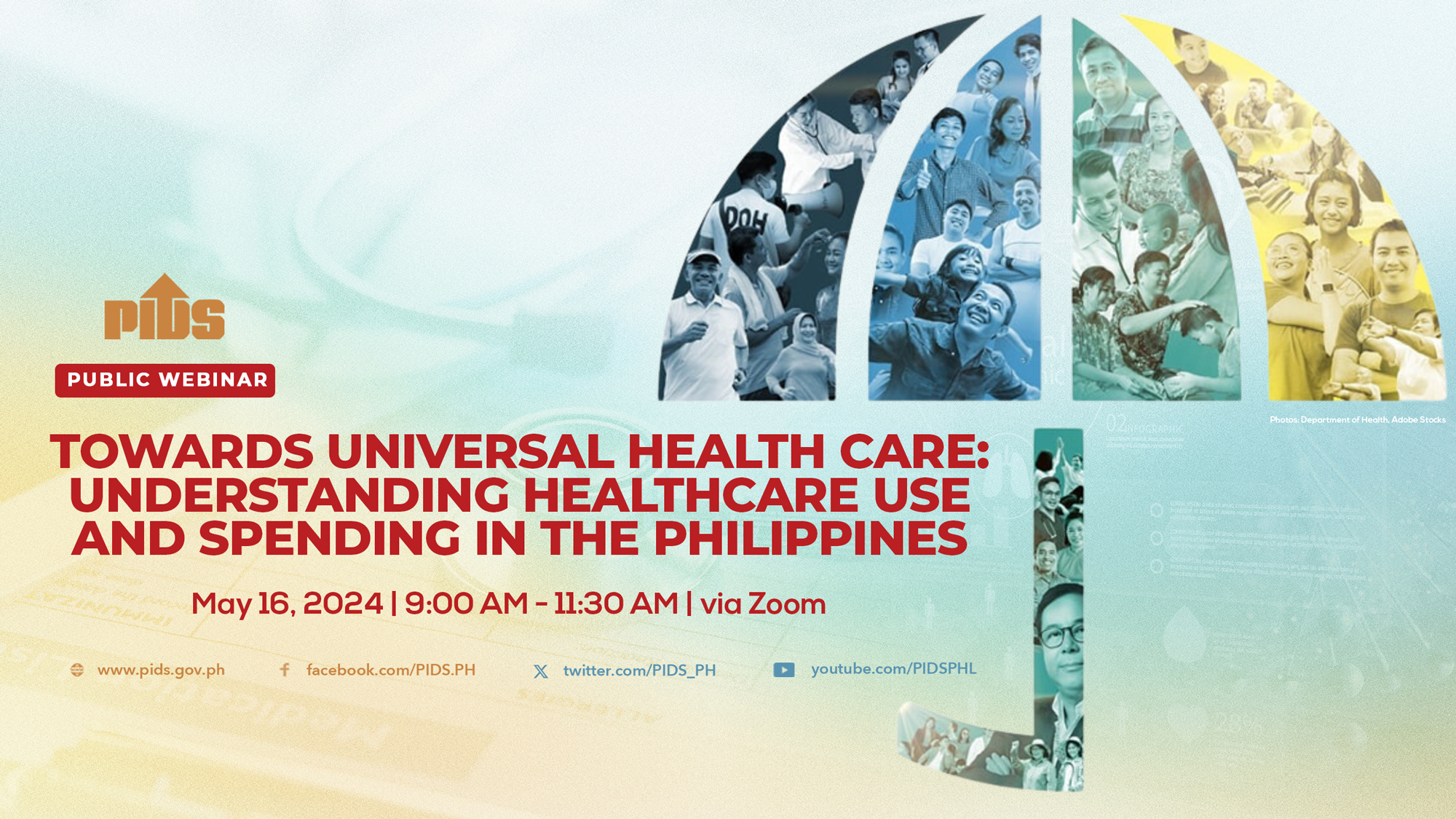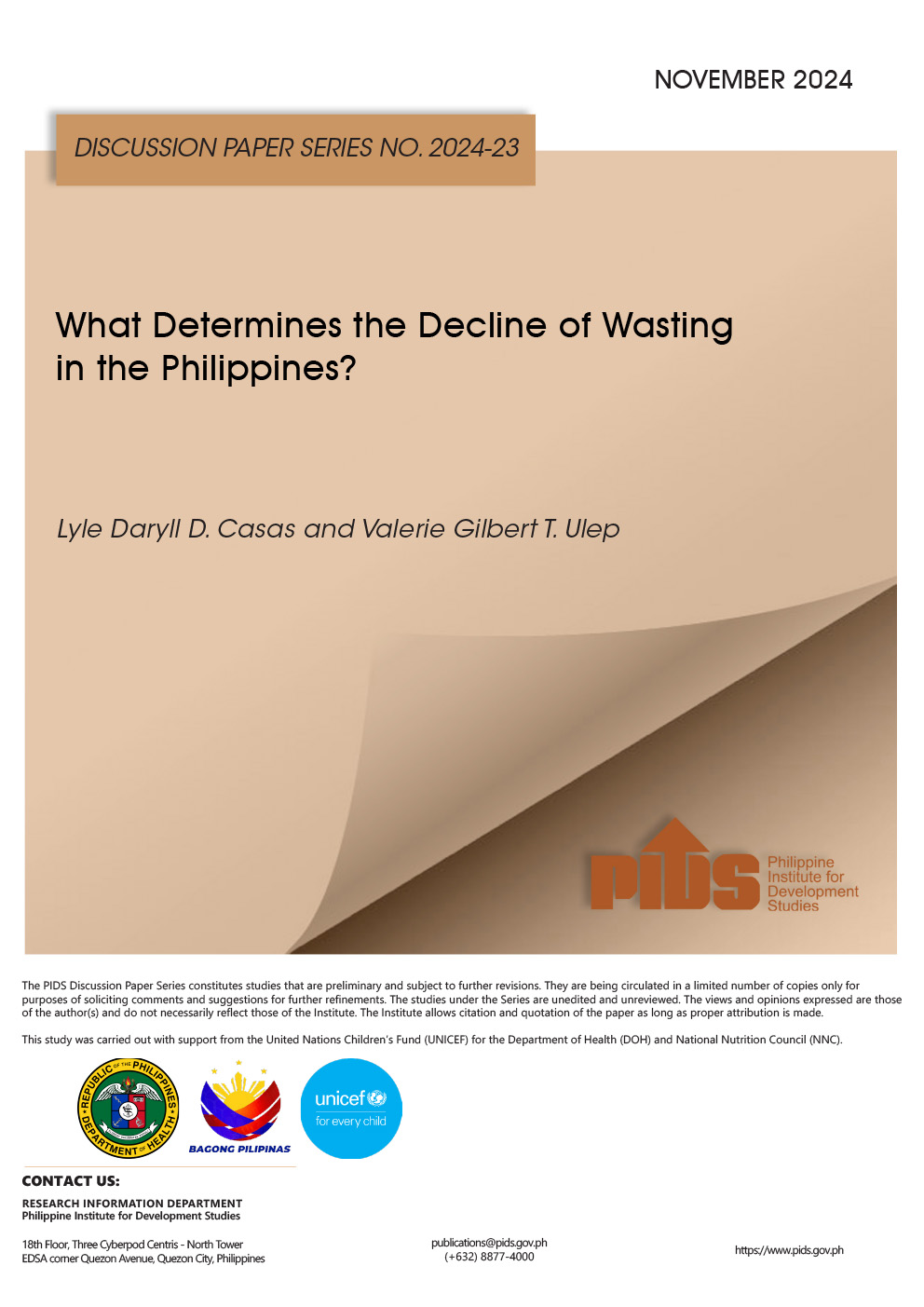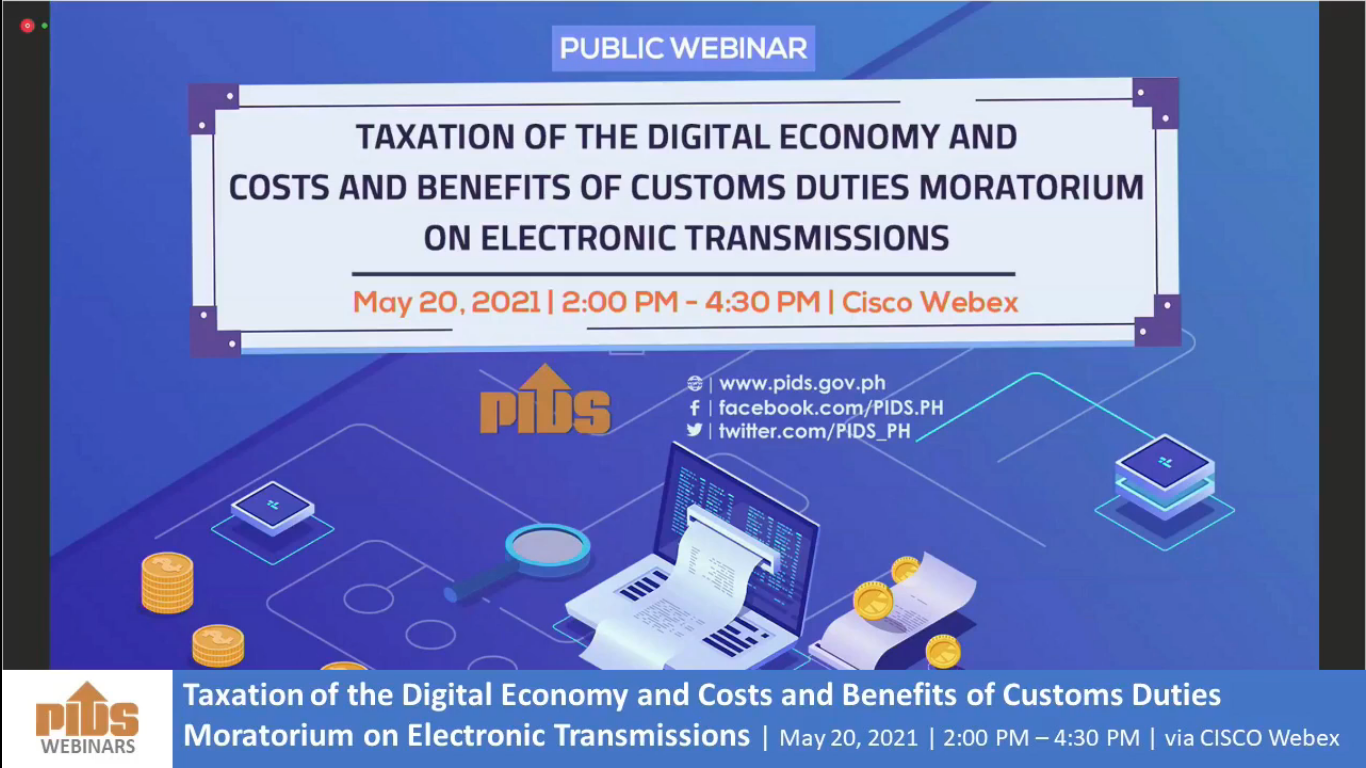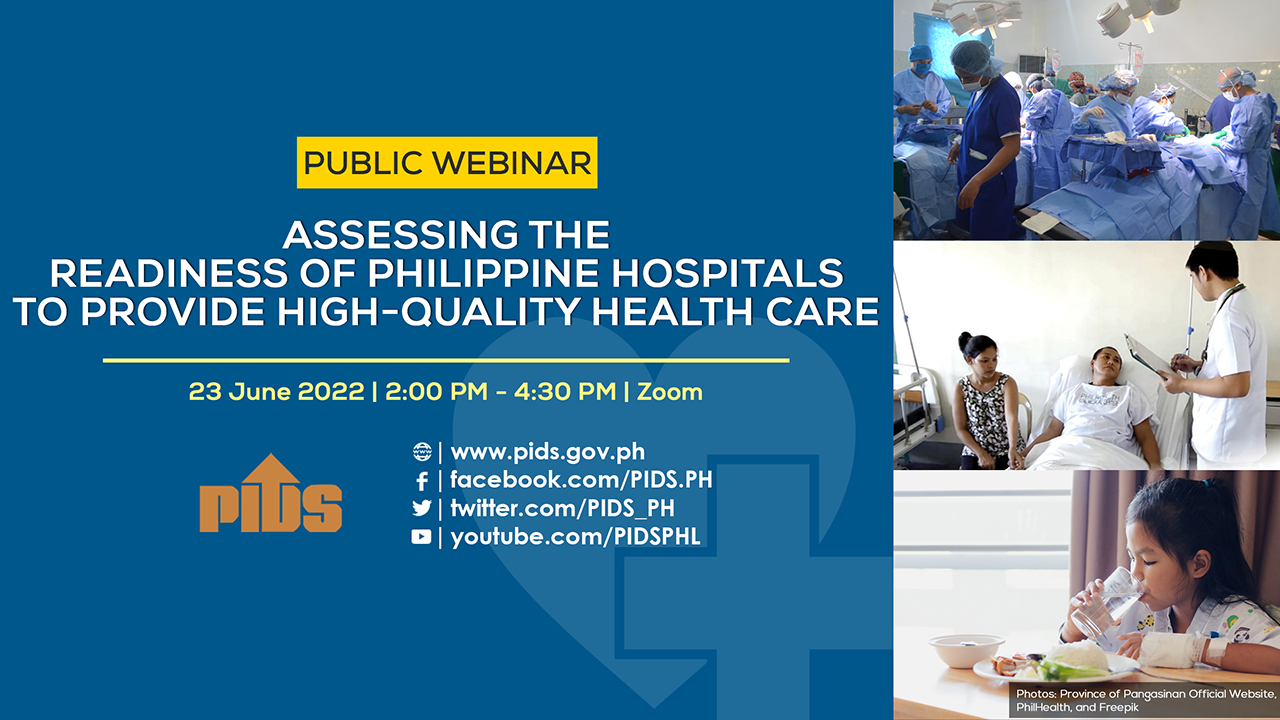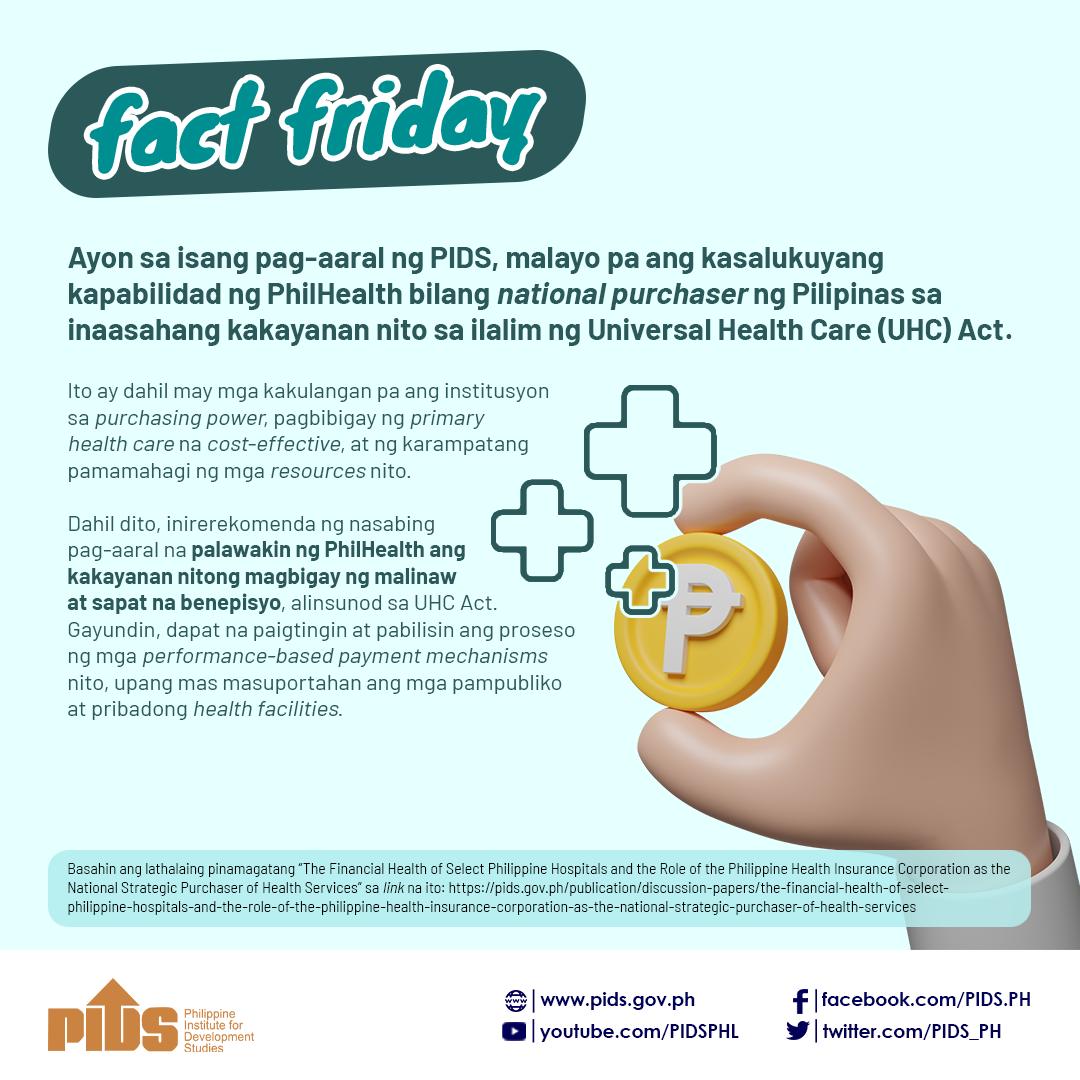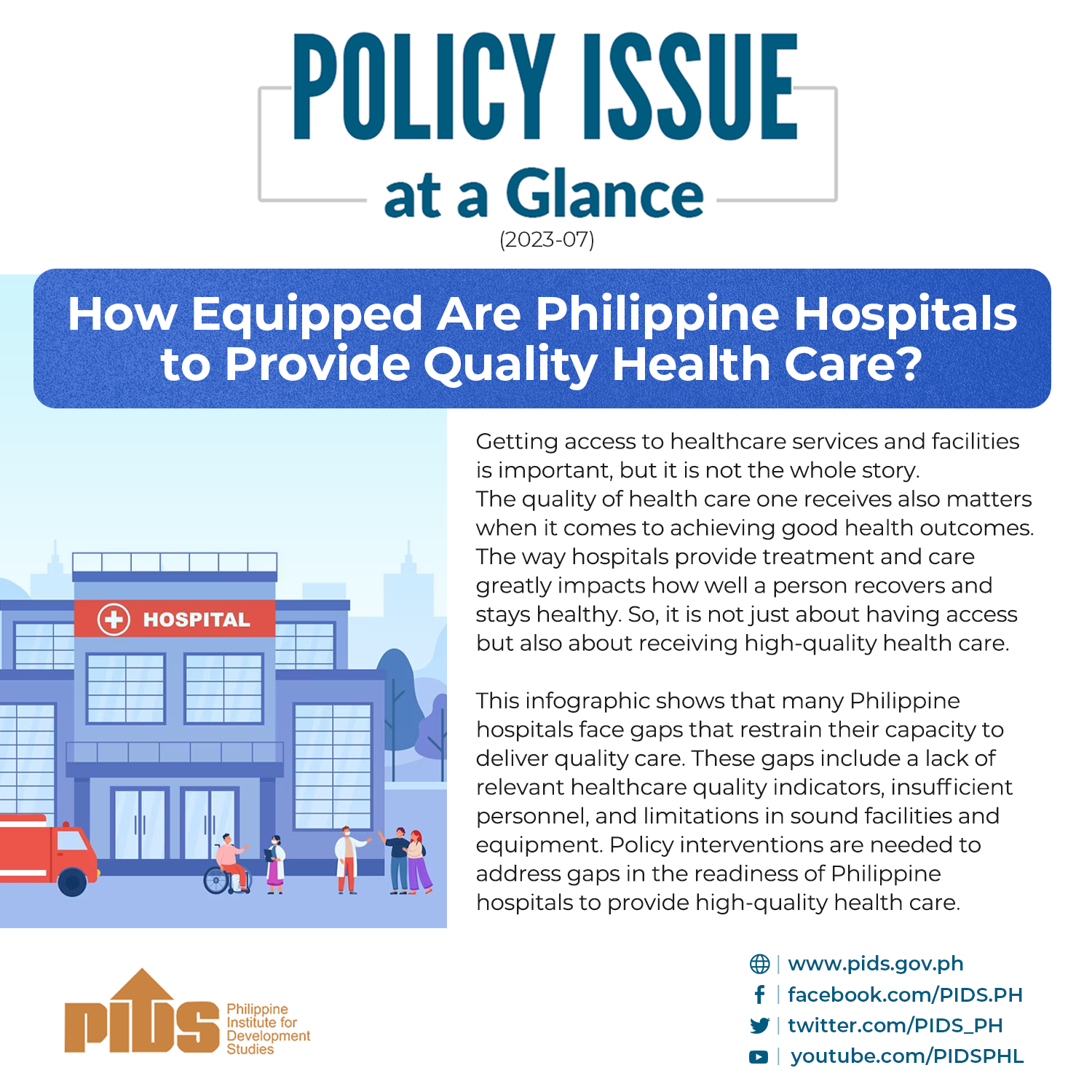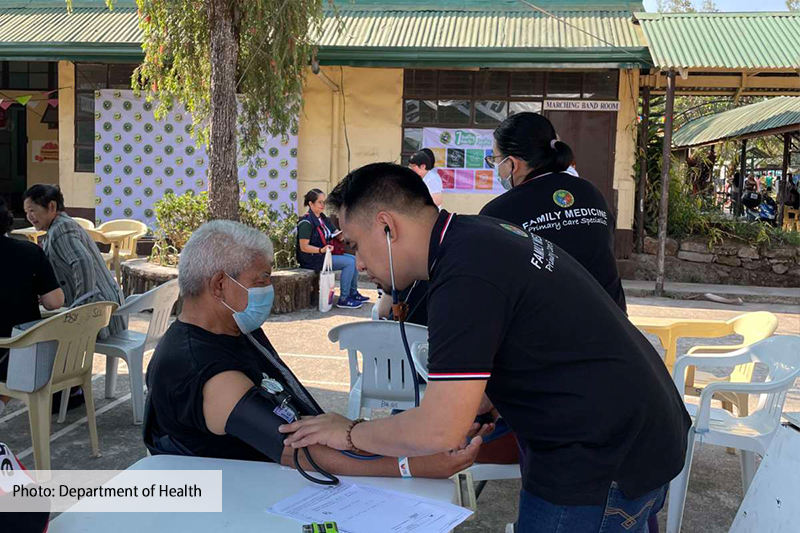
Filipinos with non-communicable diseases (NCDs) such as cardiovascular diseases, cancer, and diabetes, shoulder significant out-of-pocket health care expenses.
This finding was highlighted in a recent webinar conducted by the Philippine Institute for Development Studies (PIDS) featuring the study titled “Determinants of Household Out-of-Pocket Expenditure on Noncommunicable Diseases”. Authored by PIDS Consultant Lovely Ann Tolin and PIDS Senior Research Fellow Valerie Gilbert T. Ulep, this study, which utilizes data from the 2018 National Health Expenditure Survey (NHES), is part of the broader three-part PIDS paper titled “Analysis of the National Health Expenditure Survey Round 1 and Design of Survey Protocol for NHES Round 2 (Phase 1)”.
Tolin revealed that there are several factors influencing out-of-pocket spending on NCDs. These include type of health facility (with private facilities leading to higher costs), health insurance coverage, presence of comorbidities, and socioeconomic status. This financial burden applies to both outpatient and inpatient care, with medications and professional fees being the top cost drivers.
“On an aggregate scale, estimates from the Philippine Statistics Authority showed that NCDs accounted for 30 percent of Total Health Expenditures in 2019,” Tolin said. “This is a particular concern given that household out-of-pocket expenditures will constitute almost half of total health expenditures owing to the lengthy and expensive treatment processes for NCDs,” she continued. It was revealed that these expenses are covered by household resources, including savings and income, for both outpatient and inpatient services.
Based on the authors’ analysis, having Philippine Health Insurance Corporation (PhilHealth) coverage alone does not seem to statistically decrease out-of-pocket spending on NCDs. This may be due to limitations in the PhilHealth benefit package for NCDs which leave patients financially exposed, or the finding could reflect a demand-side shift. Access to PhilHealth might have influenced healthcare service pricing, potentially leading to a decrease in costs and a subsequent increase in demand for these services.
PhilHealth, represented by Senior Vice President Dr. Renato Limsiaco, Jr., acknowledged the above challenges. He assured the public of their efforts to expand health insurance coverage and make healthcare services more accessible. Their goals include exceeding the current 20 percent healthcare financing cap, reducing out-of-pocket expenses, prioritizing primary care services, improving provider payment methods, and strengthening the overall sustainability, digitization, and governance of the healthcare system.
The study also revealed interesting trends on how people utilize healthcare. People tended to choose hospital outpatient departments over smaller rural health units (RHUs) and health centers, possibly affecting investments in healthcare infrastructure and the integration of local health systems.
Expanding on Tolin’s insights, University of San Carlos Visiting Research Fellow Dr. Alejandro N. Herrin delved into whether this inclination towards hospital outpatient departments is driven by the breadth of services offered or perceived higher quality of care. He noted that private health maintenance organizations (HMOs) significantly reduce outpatient spending compared to PhilHealth. This could be due to historically limited outpatient benefits under PhilHealth. These findings raise questions about the effectiveness of current PhilHealth benefit packages and the role of supplementary insurance mandated by the Universal Health Care Act.
The PIDS study recommends several strategies to reduce the financial burden of NCDs. It underscores the importance of expanding health insurance coverage, improving healthcare service quality, and increasing accessibility through innovative solutions like telemedicine. Additionally, addressing the limitations of PhilHealth’s NCD benefit package could significantly improve financial protection for patients.
Early detection by preventive screenings and early treatment initiation would help decrease disease progression, reducing preventable hospitalizations. To achieve this, improving primary healthcare across the Philippines is essential, Tolin emphasized.
Watch the recording of the webinar here: bit.ly/pidslive051624. ###

